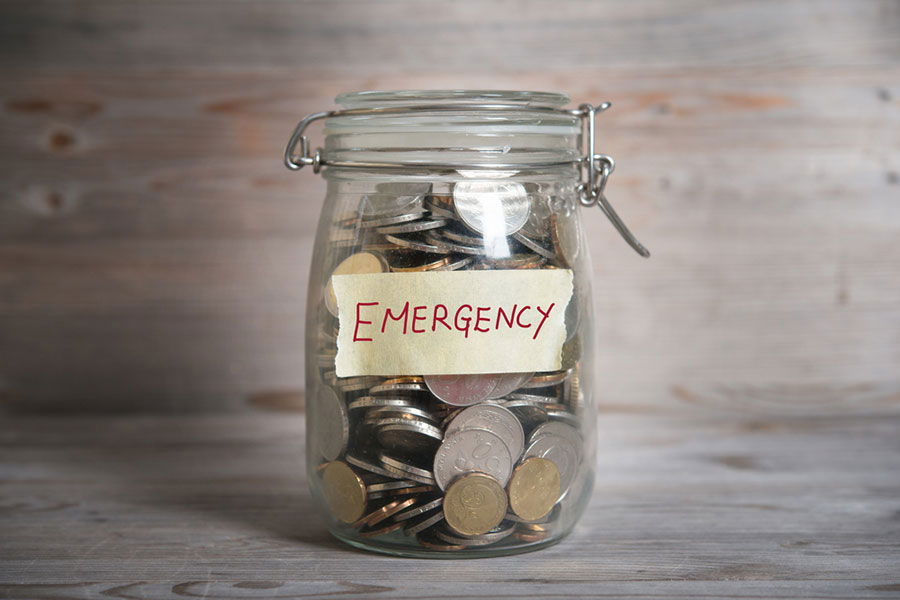You’ve worked hard to build good credit—now it’s time to use it to your advantage.
With strong credit, you can qualify for personal loans that offer low interest rates, higher loan amounts, and faster approvals. Whether you’re consolidating debt or covering a big purchase, you shouldn’t have to overpay.
Below are the best personal loans for good credit in 2025, including what each lender offers and how to choose the right one for your needs.
Top 8 Personal Loans for Good Credit
The best personal loans come with low rates, flexible terms, and fast funding, but each lender has its own strengths. Some focus on higher loan amounts, while others offer the easiest application process or the lowest APR. Comparing options ensures you get the best deal.
1. Credible
- Loan Amount: $1,000 to $250,000
- Term Length: Varies by lender
- Minimum Credit Score: 560 (varies by lender)
2. LightStream
- Loan Amount: $5,000 to $100,000
- Term Length: 24 to 144 months
- Minimum Credit Score: 660
3. Happy Money
- Loan Amount: $5,000 to $40,000
- Term Length: 2 to 5 years
- Minimum Credit Score: 640
4. Upstart
- Loan Amount: $1,000 to $50,000
- Term Length: 3 or 5 years
- Minimum Credit Score: 620
5. SoFi
- Loan Amount: $5,000 to $100,000
- Term Length: 3, 5, or 7 years
- Minimum Credit Score: None (average is above 700)
6. Achieve
- Loan Amount: $5,000 to $50,000
- Term Length: 24 to 60 months
- Minimum Credit Score: 640
7. Best Egg
- Loan Amount: $2,000 to $50,000
- Term Length: 3 to 5 years
- Minimum Credit Score: 640
8. LendingClub
- Loan Amount: $1,000 to $40,000
- Term Length: 3 or 5 years
- Minimum Credit Score: 600
How to Choose the Best Personal Loan for Your Needs
Not all personal loans are the same—even if you have good credit. To find the best fit, start by thinking about what matters most to you.
- Interest rate: A lower rate means less money paid over the life of the loan. But don’t stop there.
- Fees: Look for origination fees, late fees, and prepayment penalties. Some lenders skip these altogether.
- Funding speed: If you need the money quickly, check how long each lender takes to deposit the funds.
- Loan term: A shorter term means higher payments but less interest overall. A longer term lowers your monthly cost but increases total interest.
Some lenders allow co-borrowers, which can help you qualify for a larger loan or better rate. It’s worth considering if your income alone won’t get you the best terms.
And while a low APR looks good on paper, don’t ignore other factors—like customer support, flexible payment options, or a user-friendly app. The best loan is the one that fits your financial goals and makes repayment easy.
What credit score do you need to get a good loan?
Most lenders define “good credit” as a FICO score of 690 or higher. With a score in this range, you can usually qualify for better loan terms, including lower interest rates and fewer fees.
If your score hits 720 or higher, you’ll likely get access to the lowest APRs and highest loan amounts. Once you’re in the “excellent” credit range (760+), lenders tend to compete harder for your business.
That said, your credit score isn’t the only thing lenders consider. Many also look at your income, employment, debt-to-income ratio, and sometimes even your education or career field. If your credit score is just on the edge of good, but you’re financially stable, you may still qualify for great offers.
Personal Loan Rates for Good Credit in 2025
Interest rates vary based on several factors, but here’s a rough breakdown of what to expect with good credit in 2025:
| FICO Score Range | Estimated APR Range |
|---|---|
| 690–719 | 9.5% – 18% |
| 720–759 | 7% – 14% |
| 760+ | 6% – 10% |
Other things also impact your rate, including:
- Income: Higher income can mean lower risk to lenders.
- Debt-to-income ratio: A lower ratio shows you can handle new payments.
- Loan purpose: Debt consolidation loans often come with lower APRs.
Even with great credit, your rate might vary between lenders. That’s why it pays to shop around and compare offers.
How to Check Your Offers Without Hurting Your Credit
Before applying, check if a lender lets you prequalify. This lets you see estimated rates and terms without triggering a hard credit inquiry.
A soft credit check won’t affect your credit score. It simply gives the lender a snapshot of your credit report so they can show you what to expect.
Once you decide to move forward, a hard inquiry will happen. That can cause a small, temporary drop in your credit score—but if you submit all your applications within a short window (about 14–30 days), credit scoring models will usually group them as one.
Prequalification is the best first step. It gives you the confidence to compare offers without putting your credit score at risk.

What Can You Use a Personal Loan For?
Personal loans are flexible. You can use the funds for almost any large personal expense, including:
- Debt consolidation: Combine multiple high-interest balances into one manageable loan.
- Home improvement: Pay for renovations, repairs, or upgrades without tapping into your home equity.
- Medical expenses: Cover out-of-pocket costs for procedures, emergencies, or ongoing care.
- Weddings, travel, or major purchases: Use a personal loan to fund important milestones or one-time needs.
But there are limits. Most lenders won’t allow you to use a personal loan for:
- Paying college tuition
- Business startup costs
- Investing or gambling
Always check the loan agreement. If the purpose you choose doesn’t match how you actually spend the money, it could create problems later.
Pros & Cons of Using a Personal Loan
Here’s a quick breakdown of the advantages and disadvantages of personal loans:
Pros
- Lower rates than credit cards: Especially for good credit borrowers.
- Fixed monthly payments: Makes budgeting easier.
- No collateral required: Most personal loans are unsecured.
Cons
- Origination fees: Some lenders charge 1% to 8% just to process the loan.
- Risk of overspending: Easy access to funds can lead to unnecessary debt.
- Higher payments than credit cards: Even with lower rates, installment loans require larger monthly payments than the minimum on a credit card.
A personal loan can be a smart move—but only if you plan ahead and borrow responsibly.
How to Avoid Common Personal Loan Mistakes
Even with good credit, the wrong loan can still cost you. Here’s how to avoid common missteps:
How a Personal Loan Can Help (or Hurt) Your Credit Score
Your credit score will likely drop by a few points when you apply due to the hard inquiry. That’s normal—and temporary.
Once your loan is active, it can actually help your credit score. Making consistent, on-time payments builds positive history and shows lenders you’re reliable. Adding an installment loan to your credit mix can also improve your score if most of your existing credit is revolving (like credit cards).
But a missed payment or default can drag your score down fast. The key is borrowing only what you can handle and staying on top of every monthly payment.
Final Thoughts
A personal loan can be a powerful tool—if you use it the right way. With good credit, you’re in a strong position to get competitive rates, low fees, and fast funding from top lenders.
But every loan is a commitment. Compare offers, understand the terms, and be honest with yourself about repayment. The right loan should solve problems, not create new ones.
Whether you’re consolidating debt or financing something important, choosing a personal loan that fits your goals—and your budget—can help you move forward with confidence.











